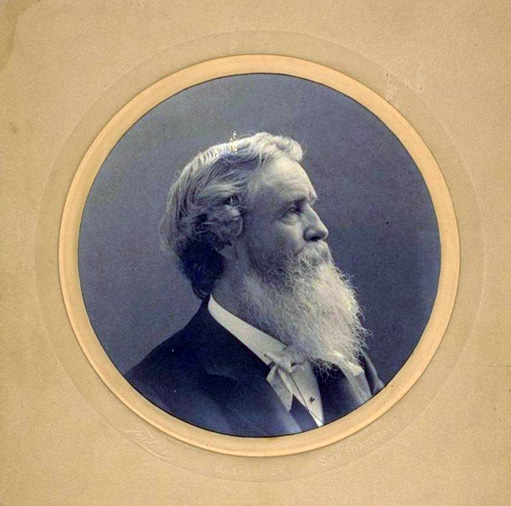
Landscape Artist
1829 - 1908

Thomas Hill was an American artist of the 19th century. He produced many fine paintings of the California landscape, in particular of the Yosemite Valley, as well as the White Mountains of New Hampshire.
Thomas Hill was born in England on September 11, 1829. At the age of 15, he emigrated to the United States with his family. They settled in Taunton, Massachusetts. In 1851, he married Charlotte Elizabeth Hawkins. They had nine children.
At the age of 24, Hill attended evening classes at the Pennsylvania Academy of the Fine Arts and studied under American painter Peter Frederick Rothermel (1812-1895). During his years as a student, Hill traveled to the White Mountains in New Hampshire as early as 1854 and sketched alongside members of the Hudson River School, such as Benjamin Champney. In 1856, Hill and his family moved to San Francisco, California.
With painter Virgil Williams and photographer Carleton Watkins, Hill made his first trip to the Yosemite Valley in 1865. The next year, Hill traveled to the East Coast and Europe. He established his family on the East Coast but continued to take sketching trips to the West Coast and to attend meetings of the San Francisco Art Association. He moved his family back to San Francisco in 1873.
Hill made yearly sketching trips to Yosemite, Mount Shasta, and, back east, to the White Mountains. Hill ran an art gallery and art supply store. He briefly acted as the interim director for the SFAA School of Design and went to Alaska on a commission for environmentalist John Muir. He lived on his stock market investments as well as his art proceeds. His marriage ended in the 1880's.
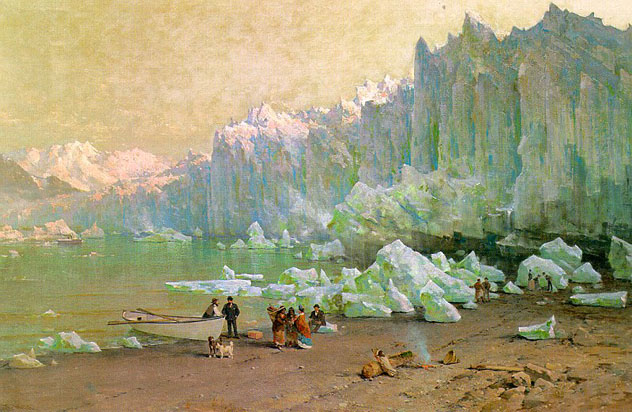
Muir first discovered the glacier that bears his name in 1879 while exploring glaciers in Glacier Bay. It was not until Muir was leaving the bay in a canoe that he saw the glacier. Stormy weather blocked it from sight on the way in. On subsequent visits the Glacier Bay Muir spent much time exploring and writing about the glacier.
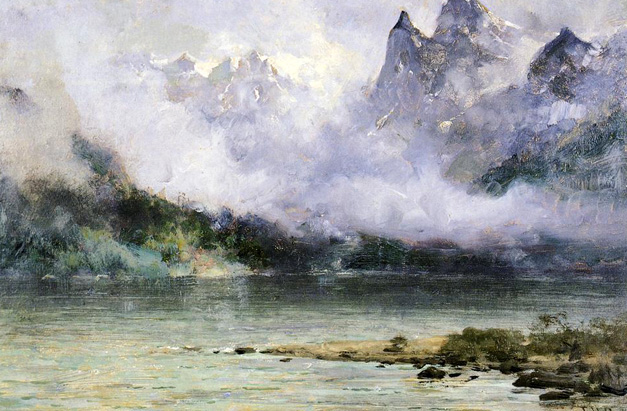
Toward the end of his life, he maintained a studio at Yosemite's Wawona Hotel. After suffering a stroke, Hill left Yosemite and traveled up and down the California coast, including stops in Coronado, San Diego and Santa Barbara. He died in Raymond, California, on June 30, 1908, and is buried at Mountain View Cemetery in Oakland, California.
Hill was loosely associated with the Hudson River School of Painters. He made early trips to the White Mountains with his friend Benjamin Champney and painted White Mountain subjects throughout his career. An example of his White Mountain subjects is Mount Lafayette in Winter. Hill acquired the technique of painting en plein air. These paintings in the field later served as the basis for larger finished works.
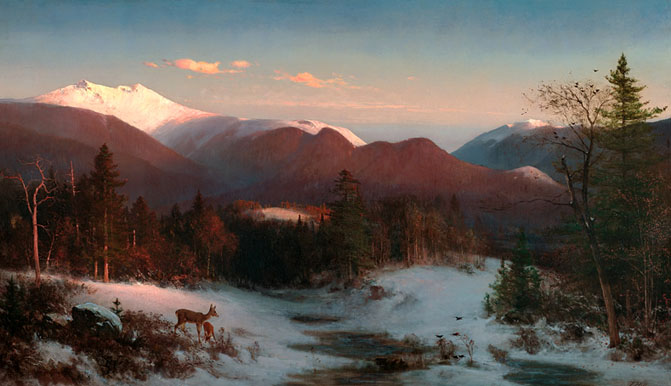
Hill's move to California in 1861 brought him new material for his paintings. He chose monumental vistas, like Yosemite. During his lifetime, Hill's paintings were popular in California, costing as much as $10,000. Hill's best works are considered to be these monumental subjects, including Great Canyon of the Sierra, Yosemite, Vernal Falls and Yosemite Valley.
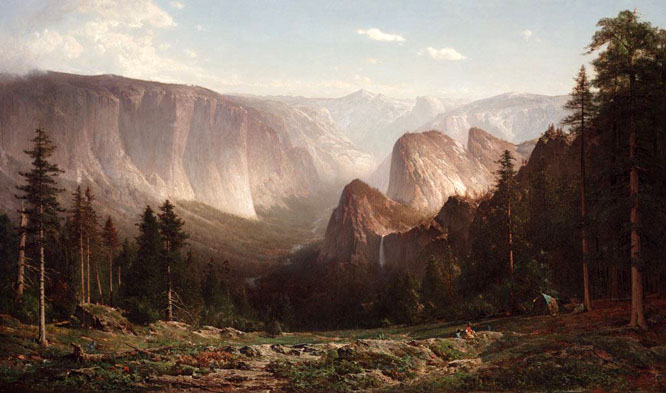
If it be true that Art, like Christianity and Civilization, has for its mission to bring us back to Nature and so to God,--then indeed is Thomas Hill...the apostle of Truth, in whose capacious brain the majestic forms and subtle effects of Nature have come to rest; and in the "Canyon of the Sierras" he has given us the incarnation of his ideas, with all the power freshness and grandeur of nature.
Nonetheless, Hill failed to secure a purchaser in the East for 'Great Canyon of the Sierra, Yosemite', and the arrangements for its installation at the Snow and Roos Gallery, rather than the ill health he cited, may have been the impetus for his return to California in May l872. There the painting again earned accolades, with one reviewer asserting it was "the grandest picture ever exhibited in this State." In adding it to his collection, E. B. Crocker not only acquired one of the artist's most impressive Yosemite views, but a stellar example of the impact Hill's recent stay in Europe had on his style. In contrast to 'Sugar Loaf Peak, El Dora do County', the foreground is developed with relatively loose, thick paint strokes, which activate the surface and provide a foil to thinner pigment in the sky, clouds, and distant mountains. As opposed to the rosy tones in the sky of the earlier painting, Hill shows the scene in even daylight, a characteristic of his later landscapes. His use of photographic and Barbizon School techniques now allowed Hill to unify California's majestic features in his compositions, both large and small.
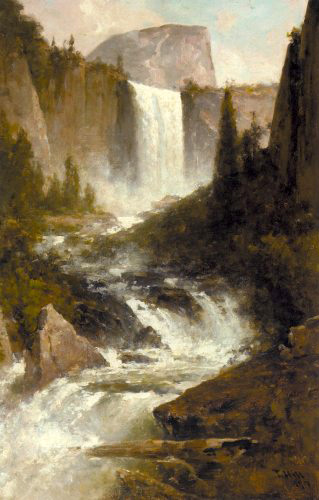
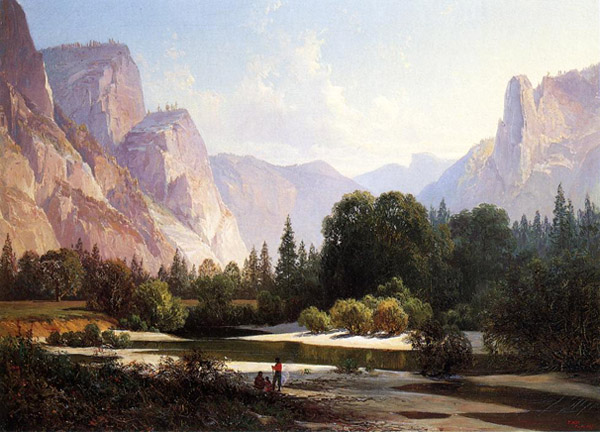
His 1865 View of the Yosemite Valley served as the backdrop for the 2009 presidential inauguration luncheon, on loan from the New York Historical Society. The painting was chosen because it represents the 1864 Lincoln signing of the Yosemite Grant, which set aside Yosemite Valley as a public reserve, the first time the federal government had taken such an action. The tradition of the inaugural luncheon dates from 1953 (with previous versions being held as far back as 1897), and since 1985 a painting has been chosen to serve as the backdrop for the head table.
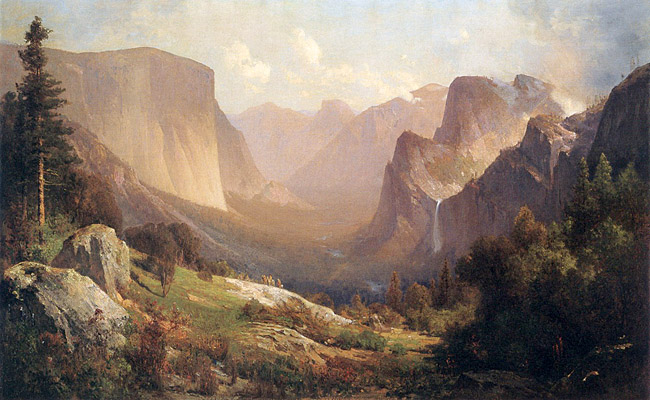
Hill's most famous and enduring work is of the driving of the "Last Spike" at Promontory Summit, U.T., on May 10, 1869, to join the rails of the CPRR and UPRR. The huge painting, which features detailed portraits of 71 individuals associated with the First Transcontinental Railroad, hangs at the California State Railroad Museum in Sacramento, California.
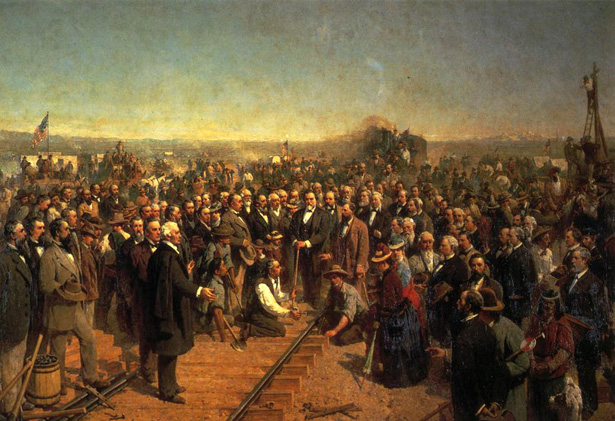
At the same time, we would remind our readers that the News Letter supplied the golden spike which wedded the West to the East. Its facsimile is shown in the accompanying cut. We would, also, modestly call attention to the fact that what we did at the beginning of these vast enterprise we have consistently upheld to the present day.
No sensible man now fails to recognize the fact that the transcontinental railroad has been the main artery through which has travelled the life-blood, not only of California, but of all the Western States. From it smaller railroads arteries have sprung, which, but for its maternal strength, would not have known life for centuries hence-perhaps never.
Our motto has always been: "Stick to your text," and it was never more apropos than in our adherence to the doctrine that what the vulgar herd abuses as "monopolies," sensible people should support.
But for the Central Pacific, San Francisco would still be an unknown village on the extreme frontier of America-scarcely a part of the United States-and the same would be the case with Oregon, Washington Territory, Nevada, Arizona and Colorado.
As is well known, the great project at first met with hot opposition. But it was taken in hand by a few determined, energetic and able men, who risked what fortune they had on the result. Their courage has been rewarded, to some extent, but the world at large has reaped more benefit from their enterprise than they themselves have, all grumblers to the contrary notwithstanding.
It, therefore, gives us great pleasure to know that, from the outset, the News Letter has appreciated the value of the iron road which binds California to the rest of the world, and we hope we are not vain in viewing Mr. Hill's great picture as in some small degree a compliment to ourselves. Of course, we had no more to do with laying the track, or paying for it, than our neighbors, but we have at least done our best to hold the last spike where it was first driven, and have never lost an opportunity of reminding the people of the benefit which the overland route has been to the country.
San Francisco News Letter and California Advertiser
February 5, 1881
From: Wikipedia
Thomas Hill was born in England on September 11, 1829. In 1844 at the age of 15, his parents brought him to the United States, where they settled in Taunton, MA. Nearby, in Boston, the young immigrant earned a living as a carriage painter and shortly after, apprenticed at an interior-decorating firm. By 1851, he had married Charlotte Elizabeth Hawkins and had fathered their first of nine children. In their early years of marriage, the young couple encountered struggles with finances and a tragedy when twins died in infancy.
Amidst family hardship and at the matured age of 24, Hill made a drastic career move by deciding to enroll in art school. He attended evening classes at the Pennsylvania Academy of Design and studied under American painter Peter Frederick Rothermel (1812-1895). During his years as a student, Hill made the first of numerous trips to the White Mountains in New Hampshire and sketched alongside members of the Hudson River School, such as Benjamin Champney (1817-1907).
In 1856, Hill and his growing family returned to Massachusetts, where he opened his first studio in Boston. After several unsuccessful attempts to sell his paintings, Hill abandoned his career as an artist and briefly returned to the furniture decoration business. However, in response to a growing financial burden, Hill and his family ventured West in search for a better climate and economic prosperity.
Once in California, Hill became known for his landscape paintings of the America West. The year of 1865 marked a monumental date in Hill's career as an artist. Along with painter Virgil Williams and photographer Carleton Watkins (1829-1916), Hill made his first of many trips to Yosemite Valley. By the end of that same year, Hill gained success and a steady patronage for his landscapes of Yosemite Valley.
In 1866, Hill traveled to the East Coast and Europe. During his stay abroad, he continued to explore California themes in his paintings. A year later, Hill and his family returned to Boston, where he exhibited the monumental-sized Yosemite Valley. Three years later, he completed his second Yosemite monumental, Great Canyon of the Sierra, Yosemite. During his protracted stay in the East, the artist made sketching trips to the West Coast and attended meetings of the newly established San Francisco Art Association. By 1873, Hill once again settled in San Francisco, where he was appointed to the Committee on the School of Design of the SFAA.
Over the next several years, Hill made yearly sketching trips to Yosemite, Mount Shasta, and the White Mountains to gain fresh material for his paintings. By 1876, Hill had established financial stability in San Francisco and had purchased an art gallery, where he sold prints, chromolithographs, and art supplies. In 1877, the art economy in California hit a major low. In the remaining years of his life, Hill held several auctions of his works, which proved to be unsuccessful. Fortunately, Hill's previous ventures in the stock market provided a much-needed relief for his large family and allowed him to continue painting without the primary concern of creating sellable works.
In his last years, he maintained a studio at Yosemite's Wawona Hotel. The familiar Yosemite landscape was a haven for the aging Hill, and he often entertained tourists, including President Theodore Roosevelt. After suffering from a stroke, Hill traveled up and down the California Coast, making stops in Coronado, San Diego and Santa Barbara in search of a more agreeable climate. He died in Raymond, CA on June 30, 1908.
AN ANALYSIS OF THE ARTIST'S WORK
Some artists are artists by blood or artists by extensive practice; Thomas Hill was an artist of a different brand. He was driven by a vision derived from his firsthand experience of nature. Early on his life, he did not have a dream to become an artist, and he only briefly studied at a formal art institution. For Thomas Hill, Yosemite Valley and the White Mountains of New Hampshire were his classrooms, and the awe-inspiring beauty of the American wilderness was his source of inspiration.
Almost no early paintings by Hill exist today; however, it has been noted that Hill began to visit the White Mountains in the summer of 1854. His association with the Hudson River School has largely stemmed from his frequent trips to the White Mountains with artist friend Benjamin Champney.
Like many of the Hudson River School, Hill valued the practice of painting en plein-air, and created thousands of oil sketches in his lifetime. In a recent monograph on the artist, art historian Janice T. Driesbach argues that the oil sketches Thomas Hill produced en plein air are the foundation for some of the artist's larger known paintings and are in themselves some of his greatest accomplishments. In 1858, Hill exhibited 30 paintings in Boston, which were advertised as "carefully finished from sketches." As Driesbach has noted, this is the first sign that Hill's works were based on his oil sketches.
Throughout Hill's career, exploration was as large a part of his success as were his truthful sketches. Hill's move to California in 1861 allowed him to explore new geographic regions to draw material from for his paintings. He chose many monumental vistas, like the Yosemite, the Yellowstone, and other larger than life physical monuments as the basis of his paintings. His works from this point forward are occupied with scenes of the California landscape, including Napa Valley, the Russian River, Lake Tahoe and most notoriously, Yosemite Valley. Even when visiting Europe, Hill could not shake the effect Yosemite had on him and some of his greatest landscapes of Yosemite were completed while abroad.
During his lifetime, Hill's paintings were a huge success in late 19th-century California, and they often garnered a price tag of $10,000. Appropriately, many of San Francisco's millionaires of the period were patrons of his, including business and railroad tycoons E.B. Crocker, William Ralston, William Sharon, D.O. Mills and Leland Stanford. He was often favorably compared to the older generation of American landscape painters, including Albert Bierstadt, who pioneered monumental Yosemite Valley paintings. Today, Hill's own Yosemite Valley paintings remain as his most popular works and are legendary for their stunning representations of the region.
From: THOMAS HILL - CALIFORNIA LANDSCAPE PAINTER; HUDSON RIVER SCHOOL PAINTER

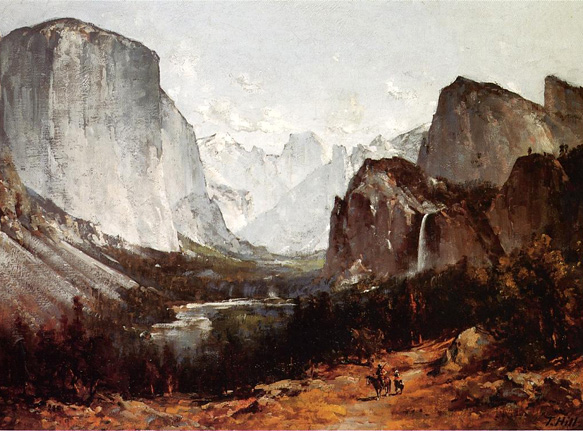

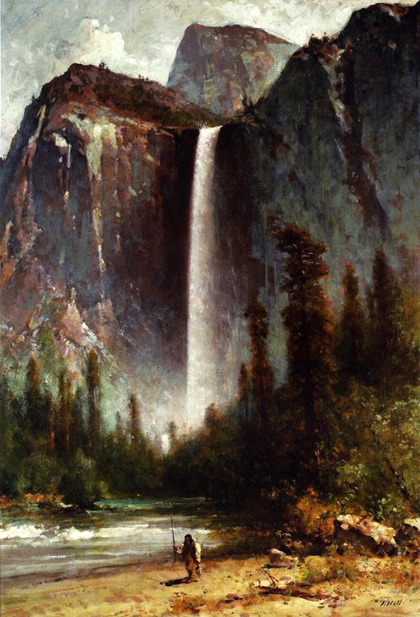
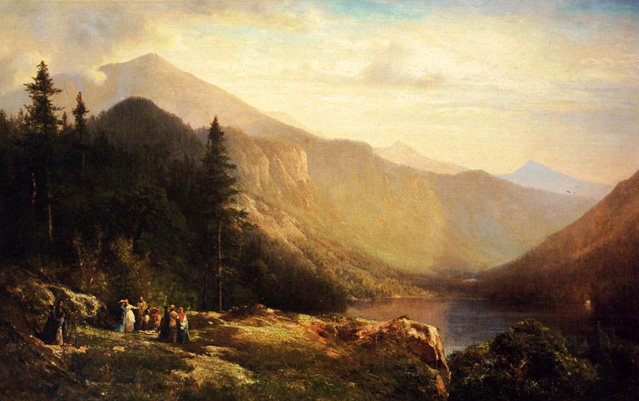
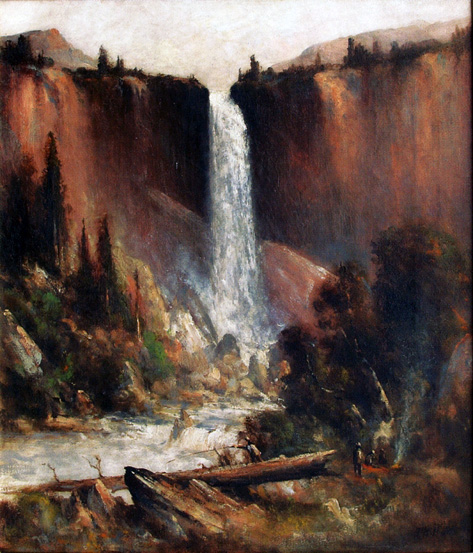
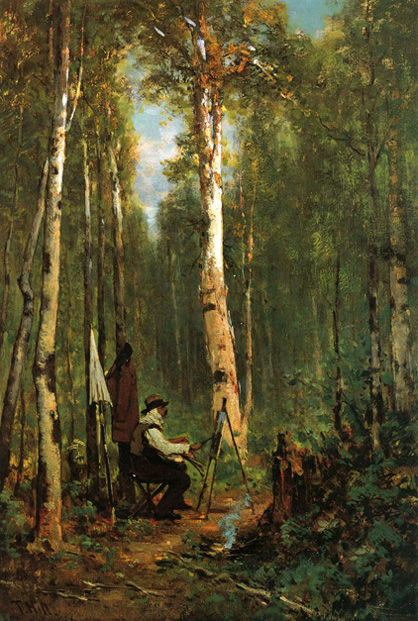
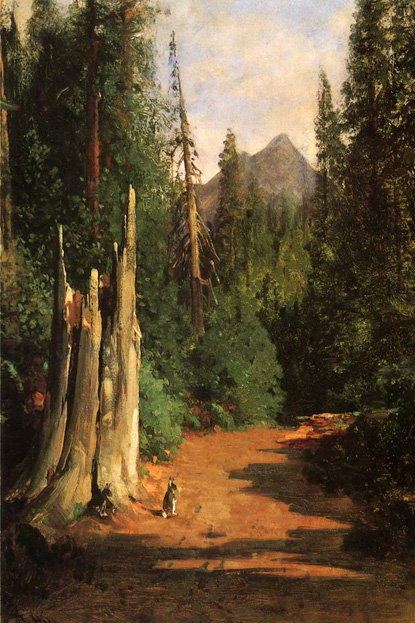
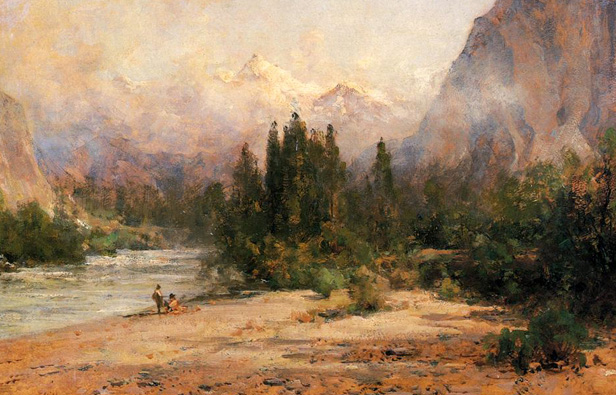
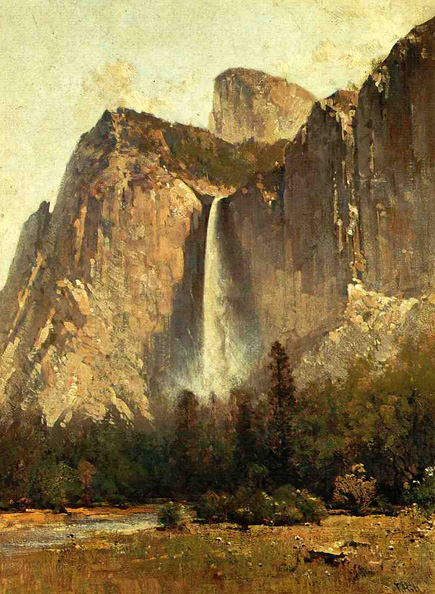
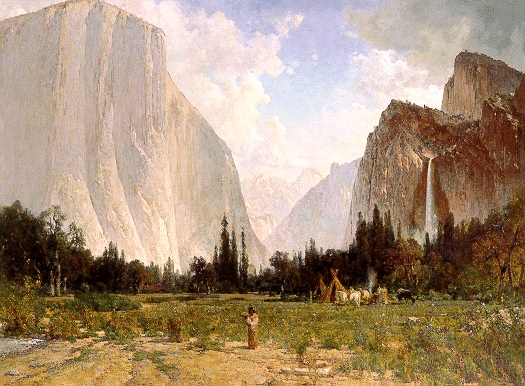
'Bridal Veil Falls, Yosemite' is probably from the 1870's, when Hill painted several of his largest Yosemite panoramas for wealthy Californians. The painting's thick, impasto handling also relates it stylistically to other works of this period. An art critic of 1870 noted Hill's change from his earlier, sketchier style to the heavier technique seen here. "Thomas Hill," he wrote, "has ignored that free sketchy style in which he was so felicitous, and adopted the dry impasto mode of the French school. In the latter he is as yet a probationer; but time may ripen him into a master." It is unlikely that 'Bridal Veil Falls, Yosemite' was painted between 1884 and 1887, as it does not seem to be listed in the artist's business notebook from that period, and after 1890, Hill's style became freer and even less detailed than it appears here.
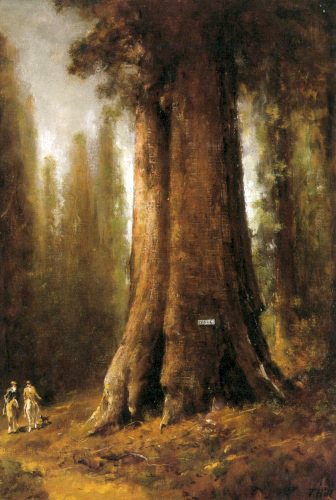

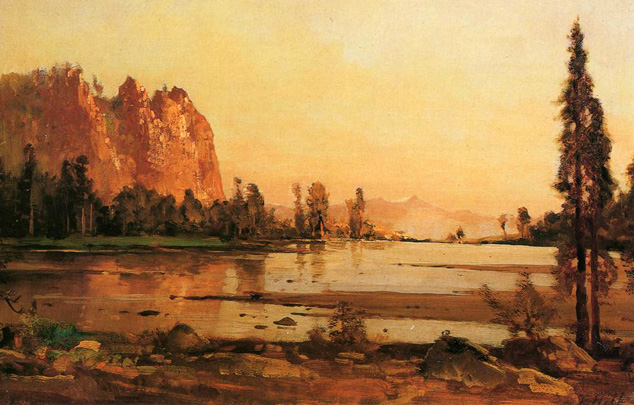
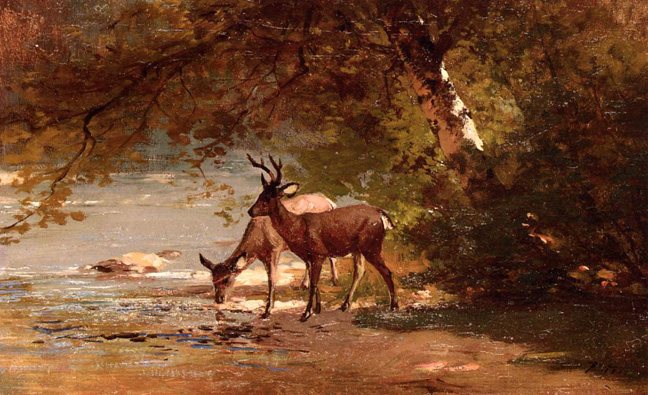
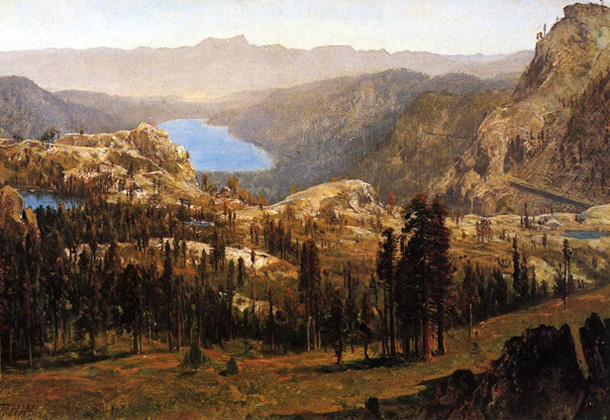
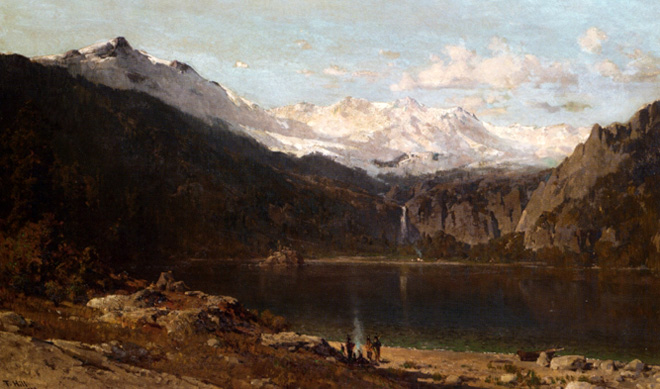
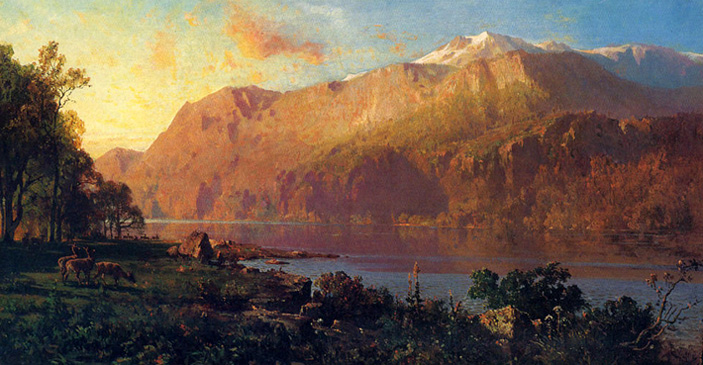
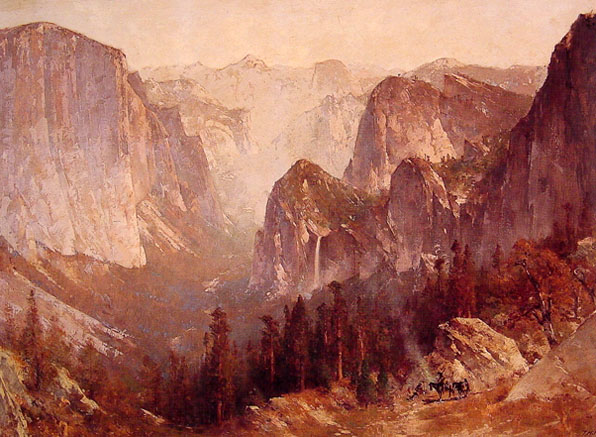
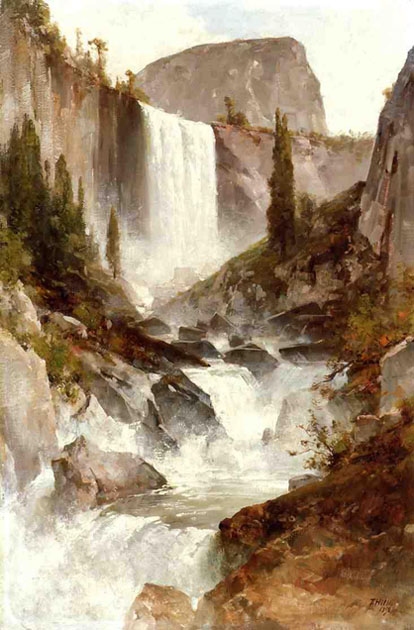
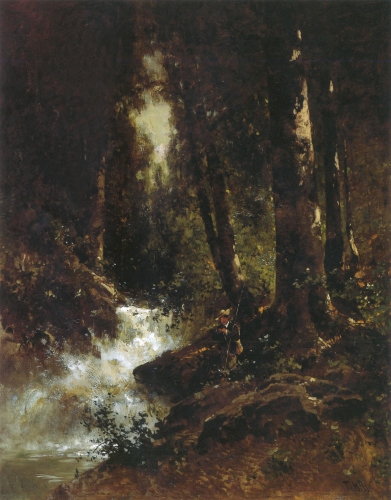

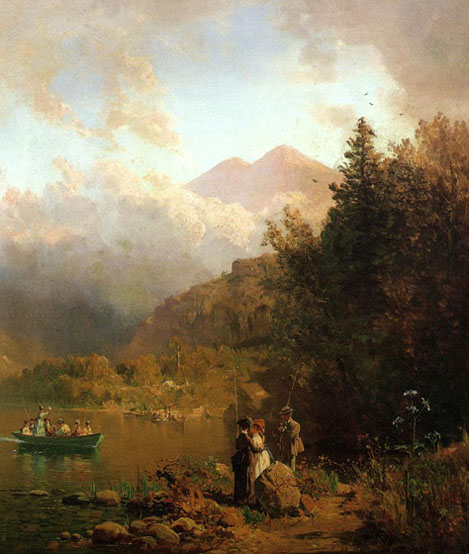
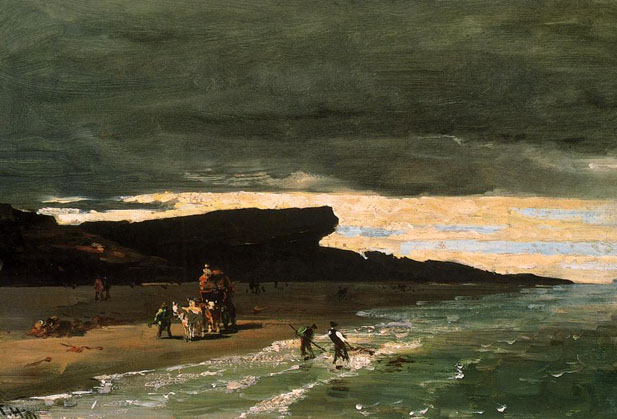
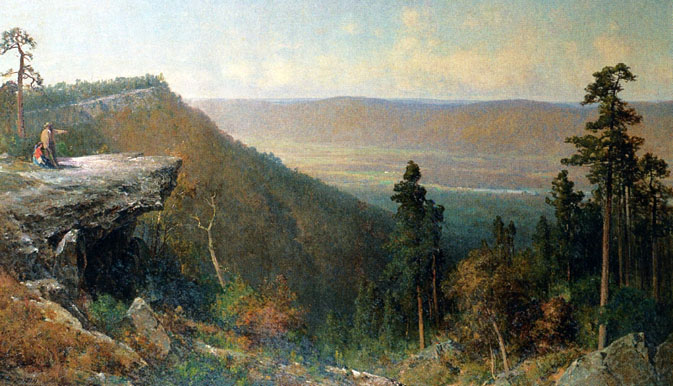
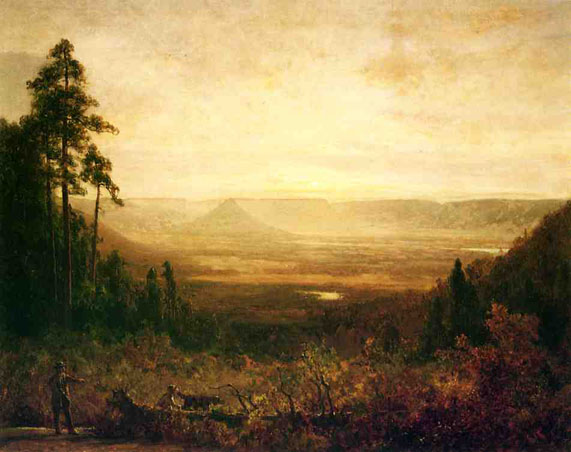
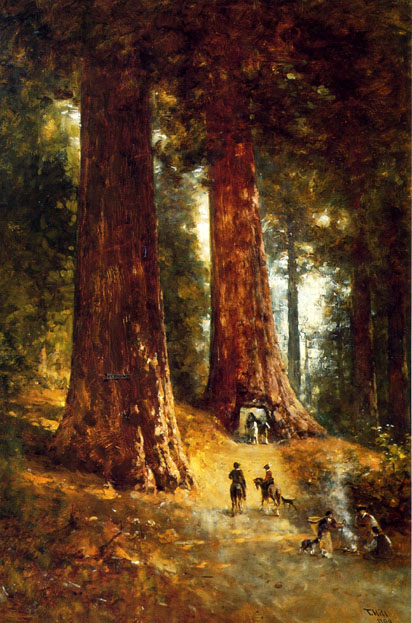
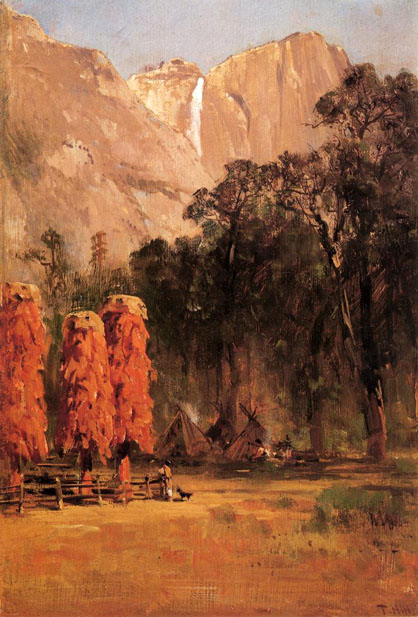

.jpg)

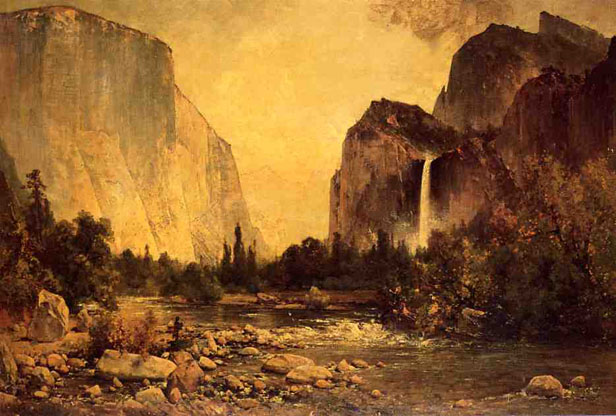


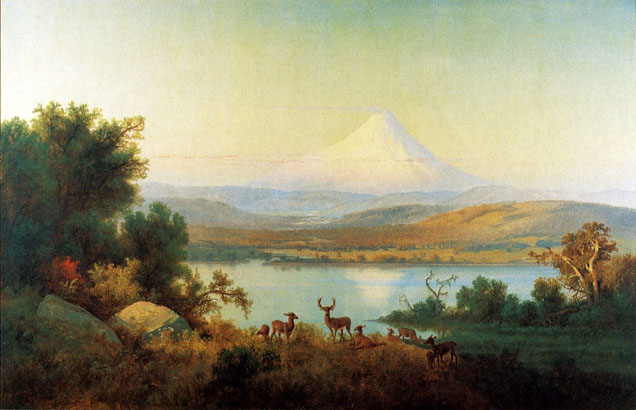
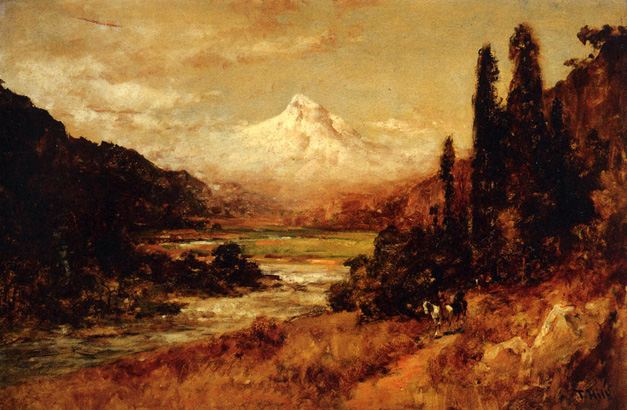
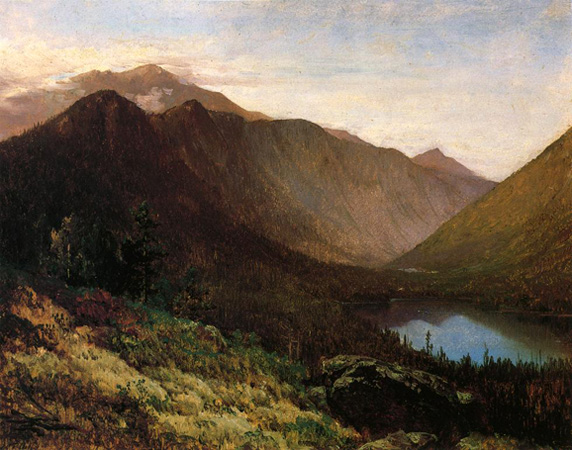
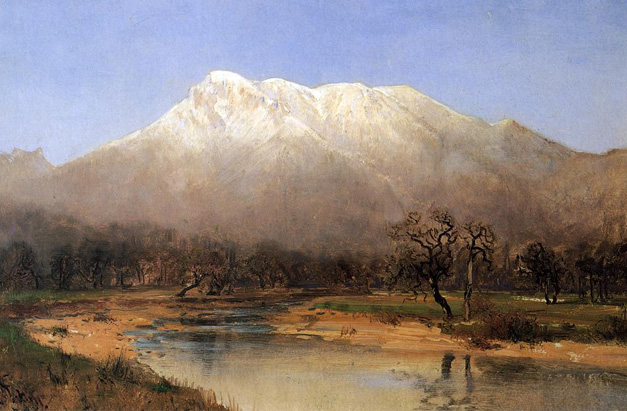
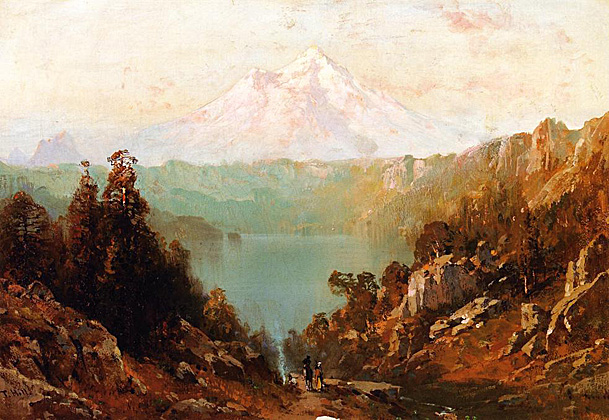
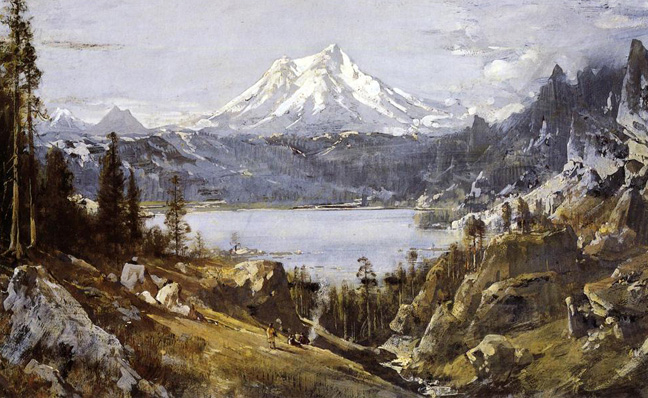
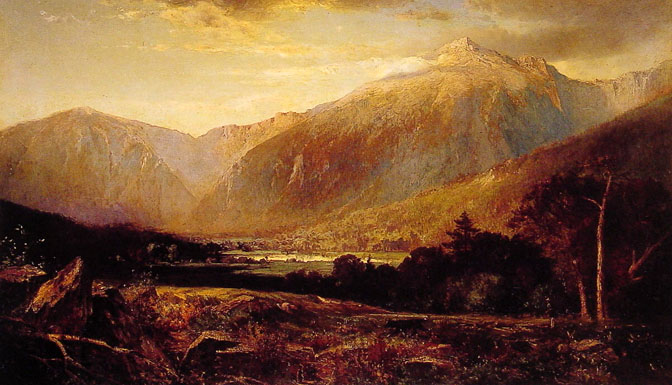
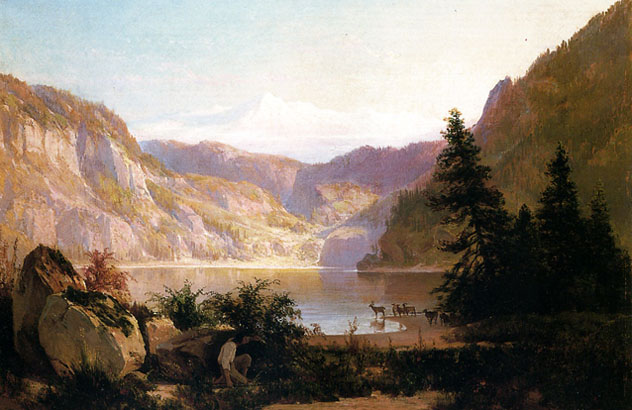
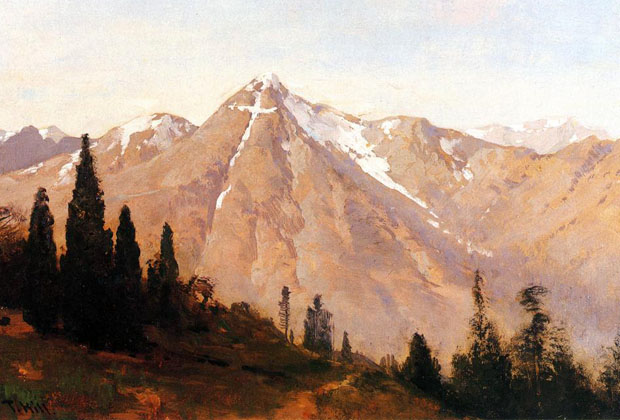
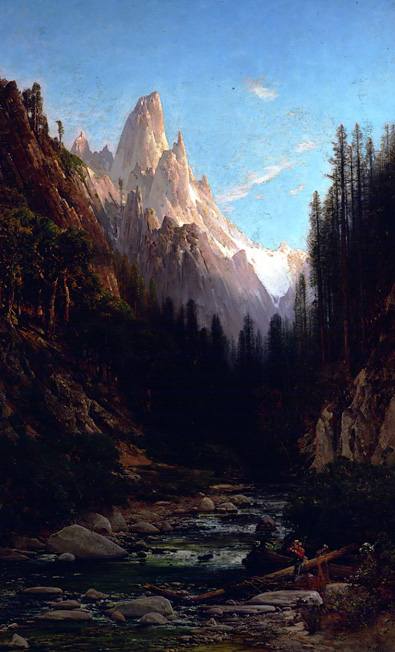
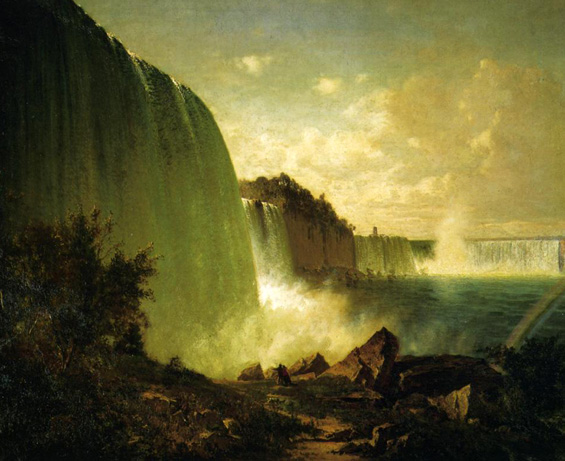
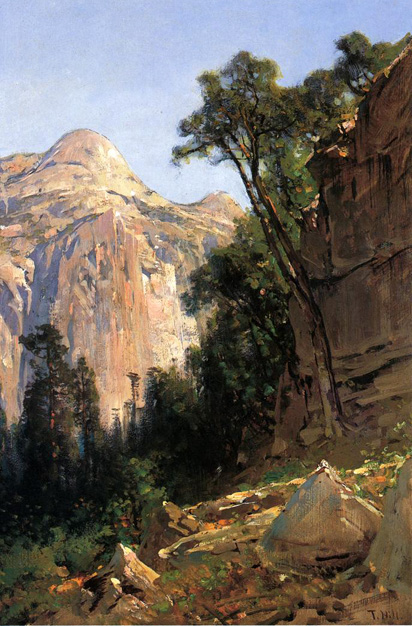
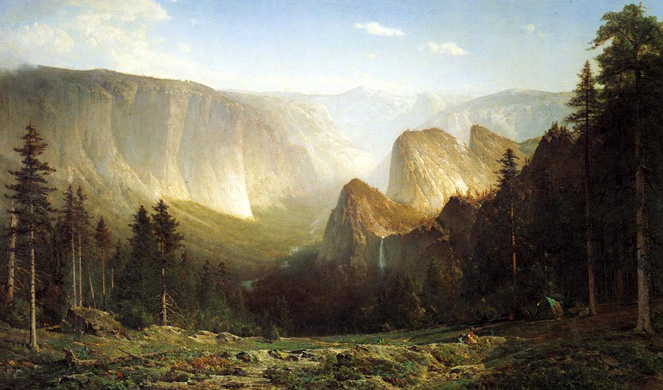
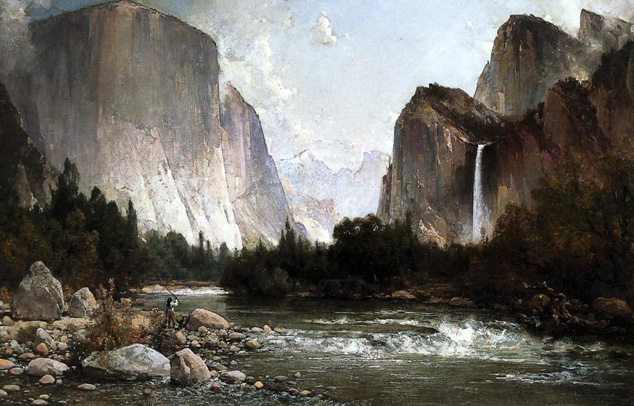
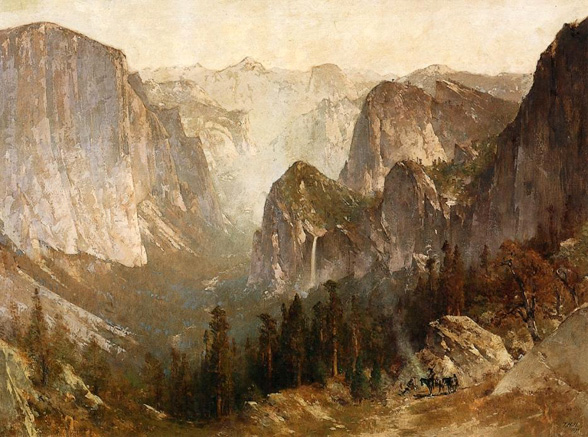
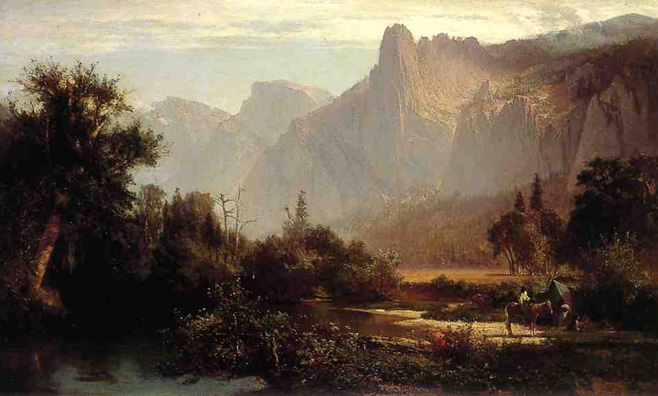
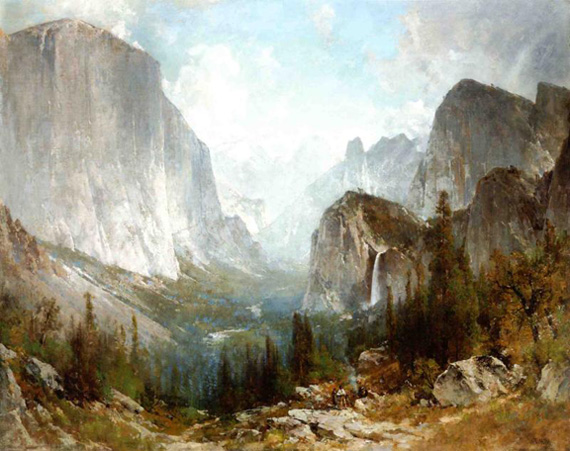
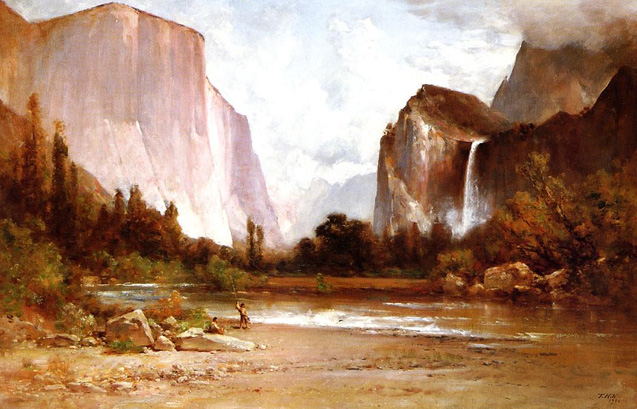
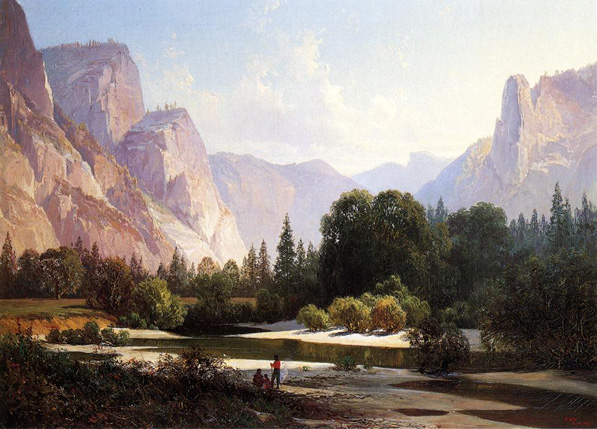
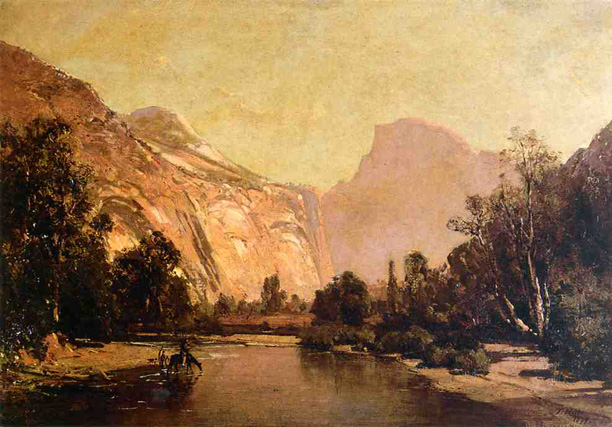
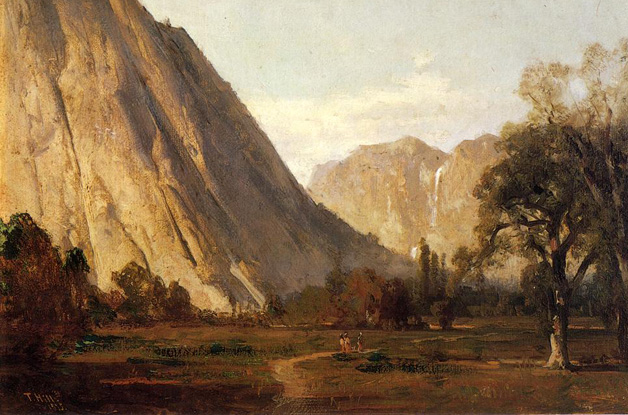
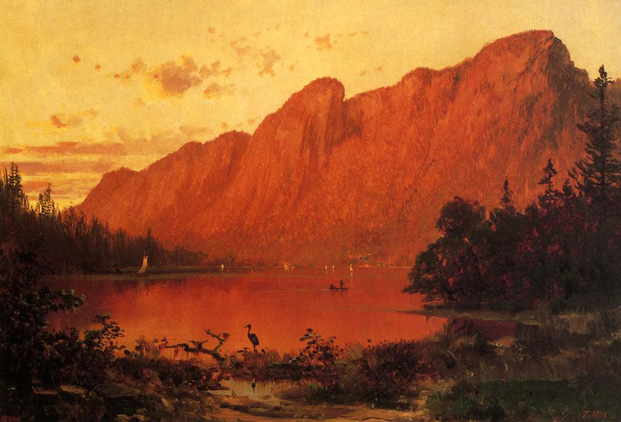
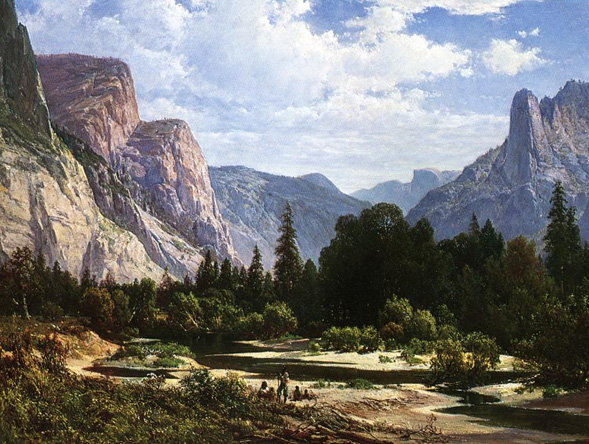

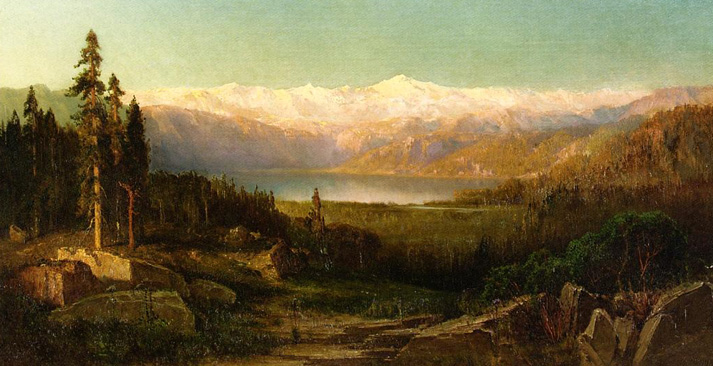
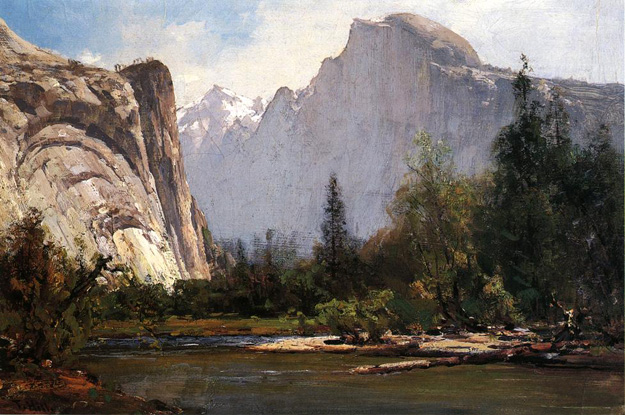
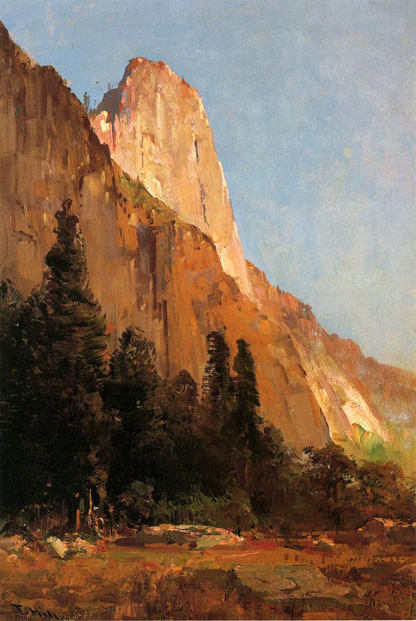

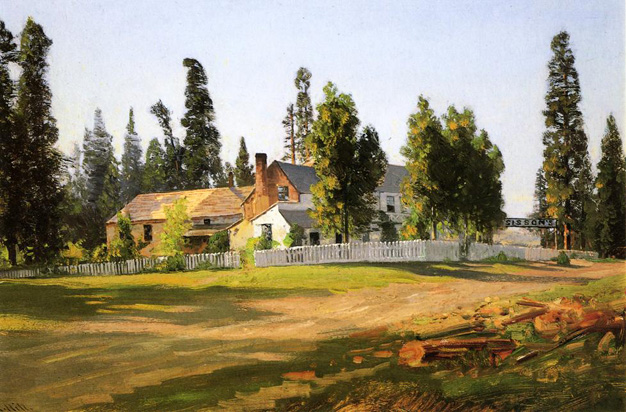
Sisson and his wife, Lydia Marie, owned and operated a hotel and tavern which eventually became world renowned. For Mount Shasta travelers of the 1860's and 1870's, it was the center of activity. As innkeeper, providing provisions, mountain guide, and expert fisherman, Sisson came in contact with some of the most interesting people of his time.
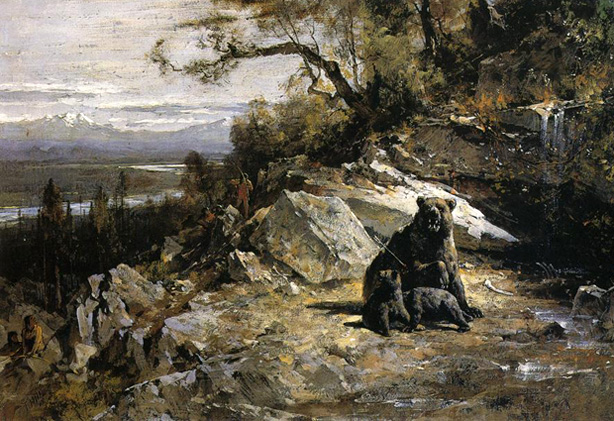


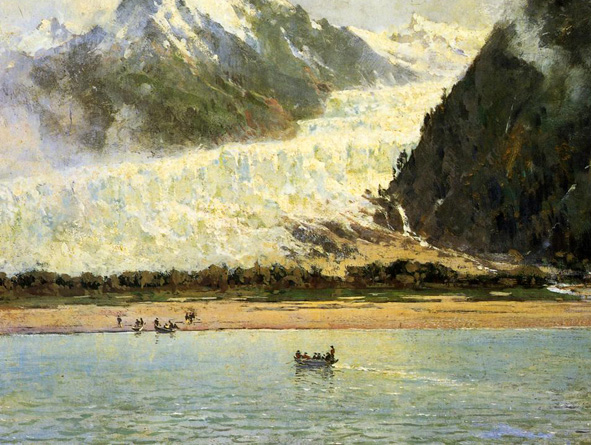
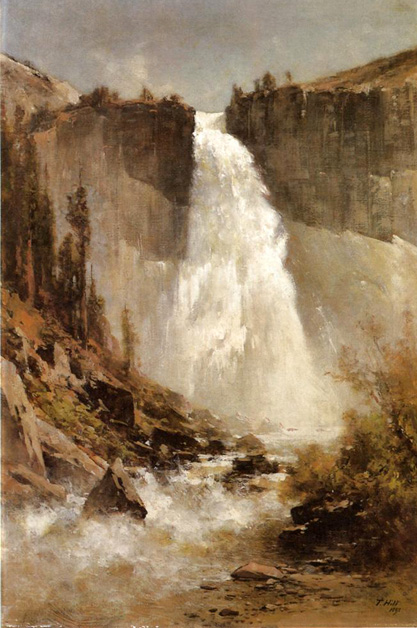

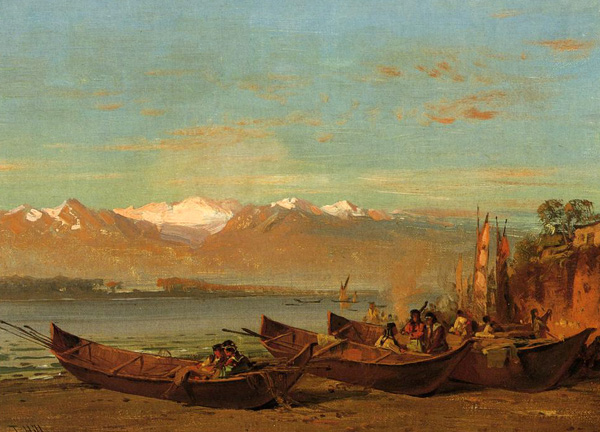
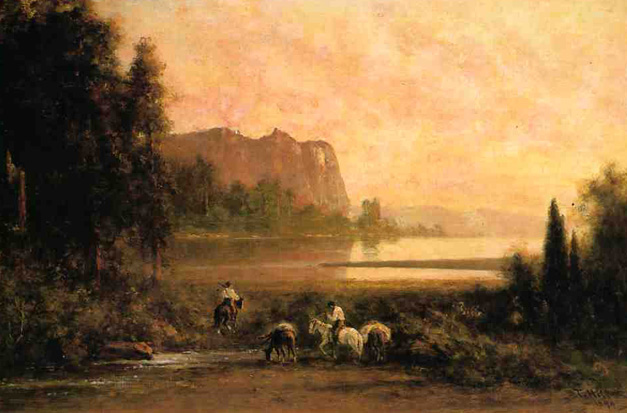
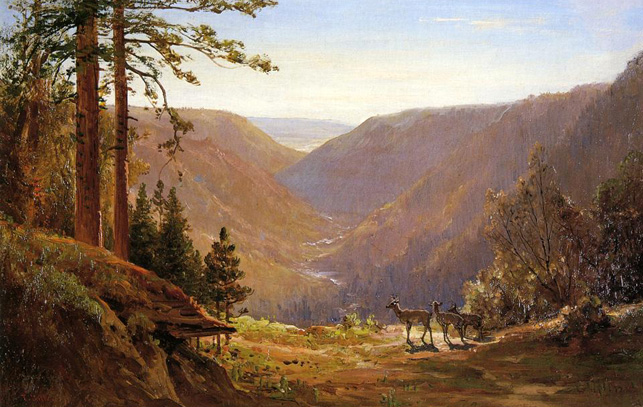
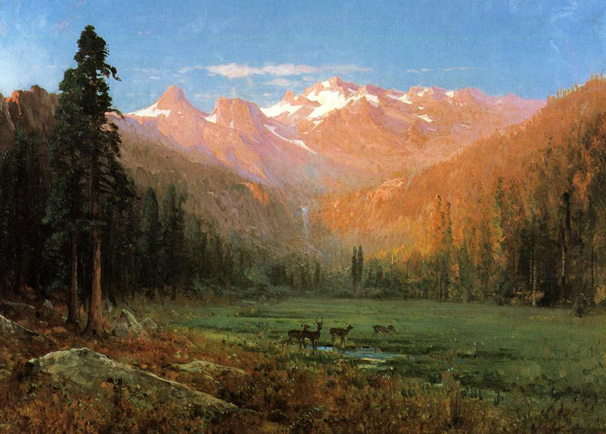
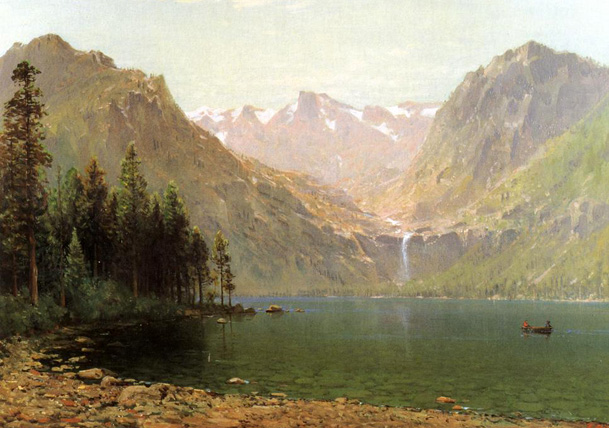
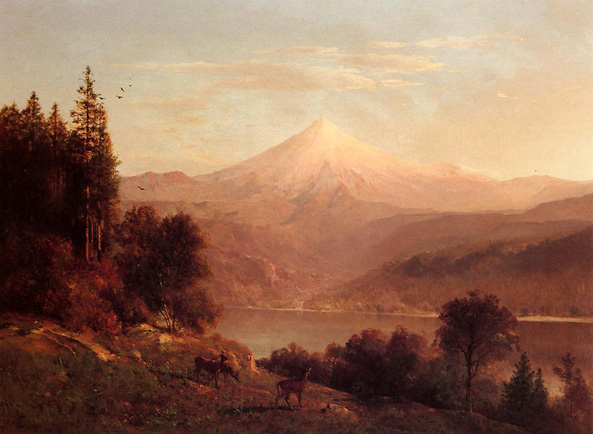

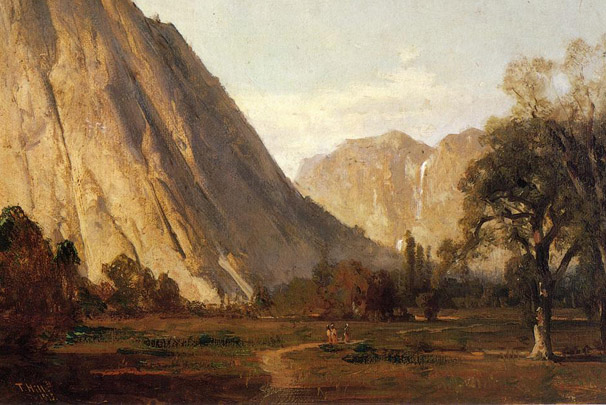
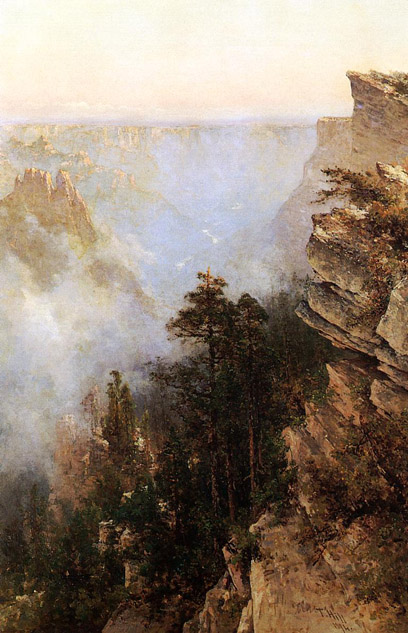

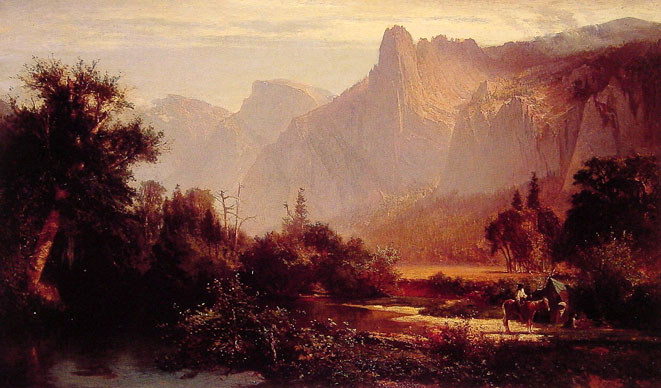
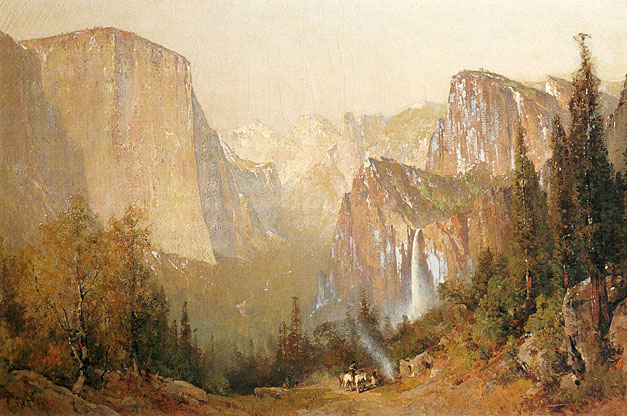
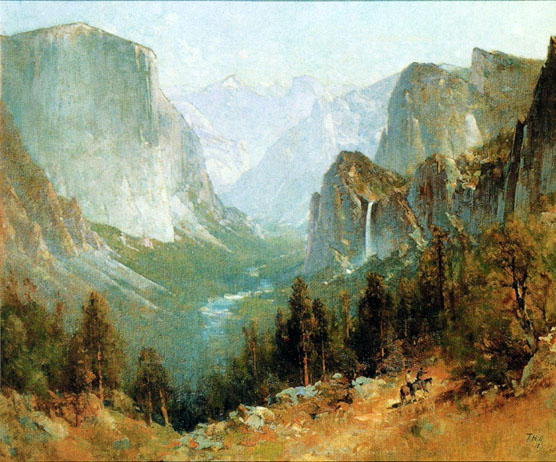
Source: Thomas Hill Online
Source: Art Renewal Center
Return to Pagina Artis
Return to Bruce and Bobbie's Main Page.